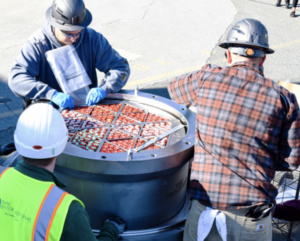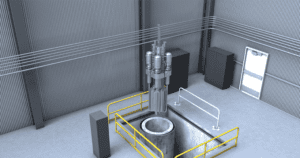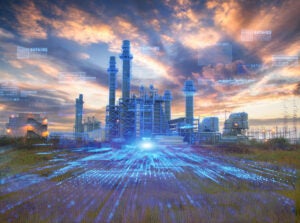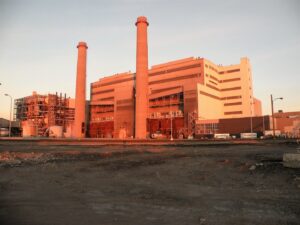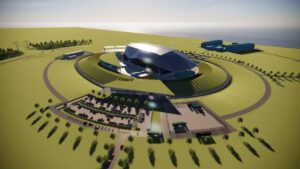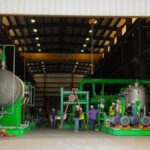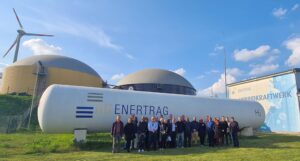
A German renewable energy company with offices worldwide has celebrated groundbreaking for a new hydrogen production plant in Wensickendorf, in the Oberhavel district of Brandenburg. ENERTRAG on October 16 said the facility will provide a foundation for regional production of green hydrogen, produced through the use of solar and wind energy.
Officials on Thursday said the state-of-the-art plant will have an electrolysis capacity of 4 MW, and will produce as much as 380 tonnes of green hydrogen annually beginning in 2026. The company said about 230 tonnes of that annual output will be reserved to supply the Heidekrautbahn (RB27) railway line between Barnim and Berlin. The company said the hydrogen produced at Wensickendorf will provide “an environmentally friendly alternative to fossil fuels and promotes CO2-free mobility in the region.”
The ENERTRAG hydrogen plant is considered a “central component” of the Heidekrautbahn hydrogen railway joint project, the first of its kind in Germany. The project, being developed in cooperation with Niederbarnimer Eisenbahn (NEB), Kreiswerke Barnim (KWB), Brandenburg University of Technology Cottbus-Senftenberg (BTU), and the German Aerospace Centre (DLR), is designed to create a regional, climate-friendly value chain for green hydrogen in the transportation sector. Officials said the project is an important building block for CO2-free, quiet rail transport, and also will provide a model for future applications in passenger and commercial transport in the region.
‘Regional Value Creation’
“With the new hydrogen plant, we are strengthening regional value creation and security of supply and providing groundbreaking impetus for innovation,” said Dr. Anne Bendzulla, member of the executive board of the Generation Division of ENERTRAG. “Our aim is to drive forward the energy transition in practical terms: we produce green hydrogen where it is needed and, together with our partners, create the conditions for climate-friendly mobility in our region—proving once again that Brandenburg is proud to play a pioneering role in the energy transition.”
The project is scientifically supported by the BTU Cottbus-Senftenberg and the DLR. It also is part of the Barnim district’s zero-emission strategy, a plan that has focused on renewable energy and CO2-free mobility since 2008, according to ENERTRAG.
Dagmar Fehler, CEO and spokesperson for NOW GmbH, said, “The Heidekrautbahn hydrogen rail joint project illustrates the strength that lies in cooperation between industry, science and politics. With green hydrogen, we are laying the foundation for climate-friendly mobility here in Wensickendorf—directly on site and with regional added value. NOW GmbH is supporting this process as a partner of the Federal Government and ensuring that such flagship projects can set a precedent nationwide.”
Funding From Transport Ministry
Officials said the Heidekrautbahn hydrogen rail project is funded by the Federal Ministry of Transport (BMV) with a total of about 25 million euros ($29.2 million) as part of the National Innovation Programme for Hydrogen and Fuel Cell Technology (NIP) funding guideline. The funding guideline is coordinated by NOW GmbH and implemented by Project Management Jülich (PtJ).
Alexander Laesicke, the mayor of Oranienburg, said, “Wensickendorf is eagerly awaiting the connection to Gesundbrunnen. An important step is being taken here to achieve this. We know all too well that the energy transition cannot be achieved without conflict. This makes me all the more convinced that this step is decisive, courageous and right. With the hydrogen plant in Wensickendorf, we are sending a strong signal for climate protection, innovation and regional future viability—a project that shows how sustainable mobility made in Brandenburg can succeed. Here’s to a successful project!”
—Darrell Proctor is a senior editor for POWER.


